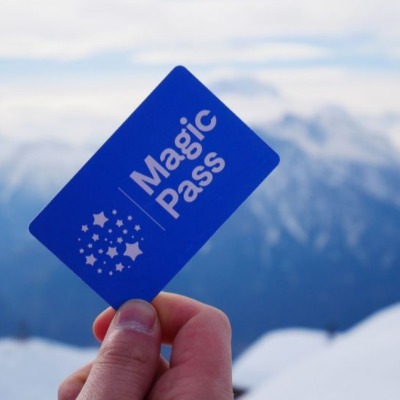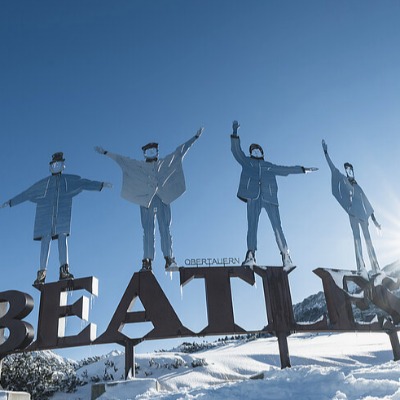VITALPIN: Glacier Area Loss Increases To 5 Percent Per Year

The United Nations General Assembly has declared 2025 the International Year for the Conservation of Glaciers. The VITALPIN association, in collaboration with the University of Innsbruck, glaciologists from Switzerland, and the relevant authorities in South Tyrol, has collected data to raise awareness among people in the Alpine region. Our glaciers can only be protected through global action.
A recently published study from Zurich provides disturbing figures. According to estimates by an international research community led by the University of Zurich, glaciers worldwide are losing 273 billion tons of ice per year. This trend is reflected in a look at the glaciers in the Alpine region.
The annual loss of glacier area in Austria increased from 1% (from 2003) to 5% (2022-2024). Tyrol is particularly affected. Two-thirds of Austria's 921 glaciers are located in Tyrol. "In the federal state of Tyrol, over 2% of the land area is covered by glaciers," explains Birgit Sattler of the University of Innsbruck's Institute of Ecology.
Glacier skiing is also often criticized. It's important to note that glaciers have been used for tourism for around 200 years, and for over 100 years, including skiing. Glaciers' appeal to the landscape is particularly significant for tourists, attracting visitors in both winter and summer. There are eight glacier ski areas in Austria—five of them in Tyrol. These glacier ski areas manage only about 1% of the total glaciated area, making up a marginal portion. Furthermore, the glaciers in Tyrol are also specially protected by state law.
The picture is similar in Switzerland. There are a total of 1,400 glaciers there. Glacier skiing is possible in nine ski resorts, but not all of them are dedicated glacier ski areas. From a Swiss glacier perspective, the years 2022 and 2023 are particularly negative: In both extreme years, 10 percent of Switzerland's glacier volume was destroyed, according to the Federal Commission for Cryosphere Observation of the Swiss Academy of Sciences.
"The glacier situation in Switzerland provides a clear and unmistakable signal that, paradoxically, can deter us from taking action. Environmental psychology tells us that the perception of threat is the worst motivation for action. My hope is that we take this signal seriously and still allow the glaciers to warm our hearts, so that we are motivated to act for the future of our children," says Swiss glaciologist Felix Keller (ETH Zurich). With the MortAlive project, Keller aims to use a snowmaking system to help combat the problem of melting glaciers. Snow protects the underlying ice from melting because it acts as an insulator and reflects a large portion of the sun's rays.
A look at South Tyrol. There are 168 glaciers there, two of which are glacier ski resorts. Due to their sunny exposure, the glaciers are more disadvantaged than in Austria. Results of the new 2023 inventory show a further decline of 15% in glacier area since 2016/17, with a total glacier area of only 72 km², i.e., just under 1% of the country's surface area. The valley glaciers have retreated by over 2 km since the Little Ice Age. Mass balance data series show average thickness losses of one meter of snow water equivalent per year since 1990, and in years like 2022, about 5% of the total volume of South Tyrol's glaciers was lost. Positive outliers were very snowy winters, such as in 2001 or 2014, when a slightly positive mass balance was observed. There are also regional differences: In the western mountain ranges, the area loss ranged between 25% and 29%, while in the east it ranged between 39% and 43%. These differences are due to topographical conditions.
"With the current climate development, the first small glaciers in South Tyrol, such as the Weißbrunnferner in Ulten, will soon disappear completely and, according to climate projections, all the others will disappear in the second half of the century," worries glaciologist Roberto Dinale from the Glaciology Department of the Agency for Civil Protection.
According to information from the University of Innsbruck, there are hardly any places in Austria where new ice can form under current climate conditions. "Models show that glacier areas will shrink significantly in the coming decades – unless a global climate tipping point is reached or a major volcano erupts. This would help the glaciers, but make life in the Alpine region difficult," explains Andrea Fischer of the Austrian Academy of Sciences.
Interesting fact: During the Holocene Optimum, the glaciers were almost ice-free, and the Sahara was green. Afterward, the climate deteriorated, and the glaciers reformed.
IMPORTANCE OF GLACIERS
Glaciers store water for rivers and drinking water, and have done so for centuries. They provide habitat for cold-loving species that are increasingly under pressure due to warming. Glacial ice is also home to a multitude of (micro)organisms and is also important for the carbon cycle. "Glaciers are the most visible indicators of global climate change. Action is needed, and on a global scale. Looking for regional culprits is wrong, not serious, and does not reflect the facts," emphasizes VITALPIN Managing Director Manuel Lutz.
This is also reflected in the statements of scientists: The IPCC's call for urgent and concrete measures to reduce greenhouse gas emissions and the associated warming is also considered essential by the international research community led by the University of Zurich to limit the effects of glacier retreat. The two local researchers Sattler and Fischer also cite decarbonization as an essential long-term protective measure.
There are some regional measures that help to protect glaciers as best as possible in the short term. Austria's glacier ski areas, for example, cover 100 hectares of glacier surface in the summer. Without this, an average of 1.75 billion liters of water would melt each summer. "It's not a question of whether covering glaciers is the ideal solution. We are taking action to at least slow down glacier retreat and, at the same time, secure the near future of glacier ski areas. The worst thing is having to explain to someone that we have done nothing. That's why I stand by this measure, even if there are critical voices – at least we tried," concludes Markus Moser, President of Bergbahnen Graubünden and CEO of Corvatsch & Diavolezza Lagalb AG.
Information about VITALPIN: This non-profit, non-political association sees itself as an editorial service and communications manufacturer, providing clarity on controversial topics, refuting false information with facts, and raising awareness of the necessity of tourism in the Alps. VITALPIN works as a bridge builder and mouthpiece, mediating between businesses and people in the Alpine region with the goal of finding sustainable solutions for all involved and ensuring a functioning tourism industry. VITALPIN members are companies across all sectors that live directly or indirectly from and with tourism.













